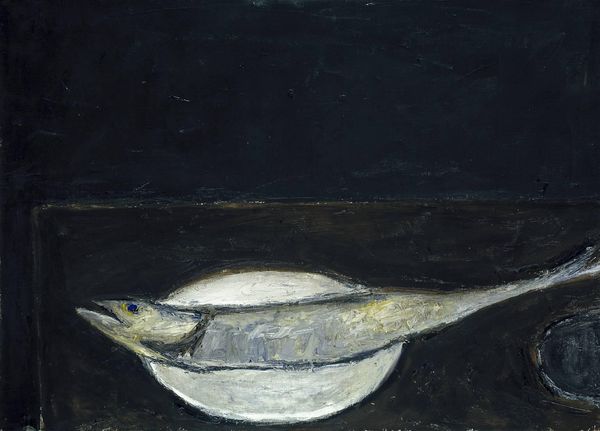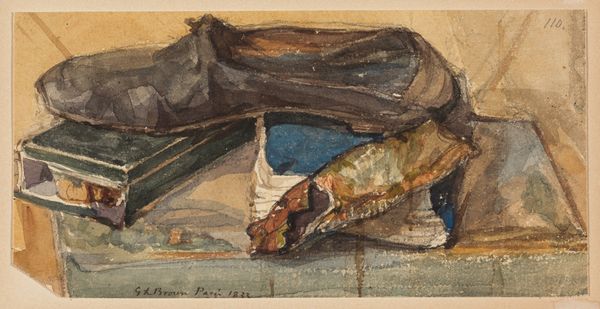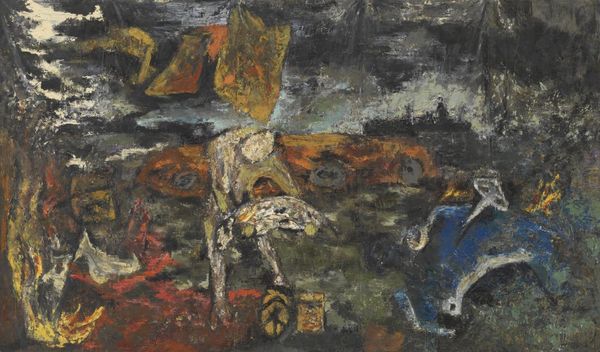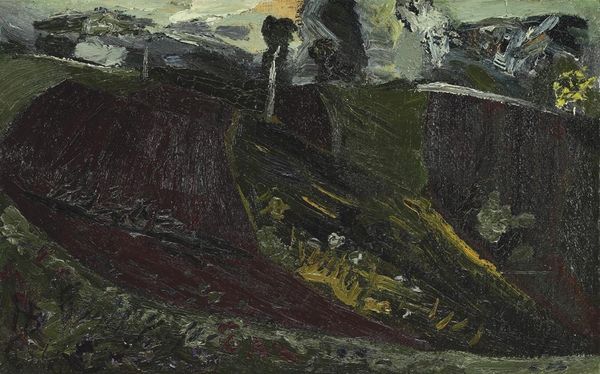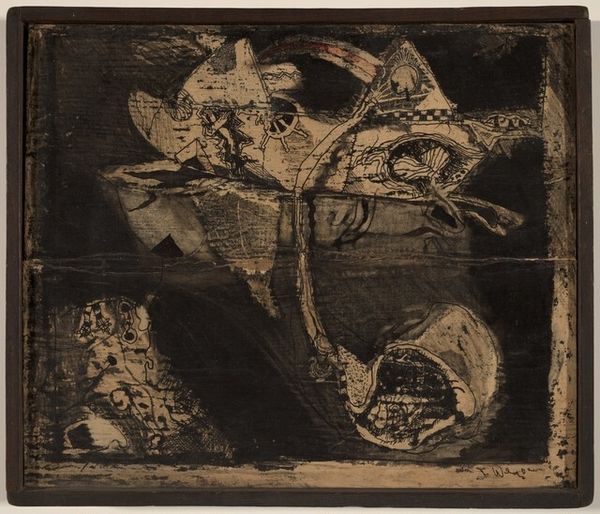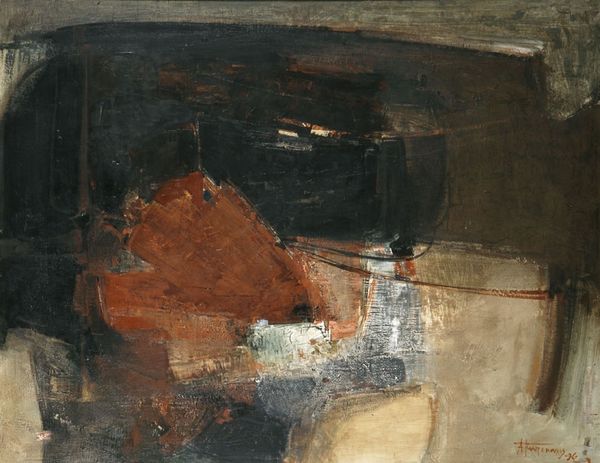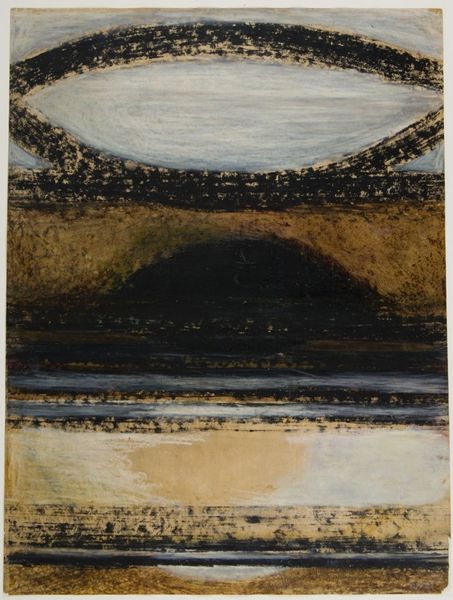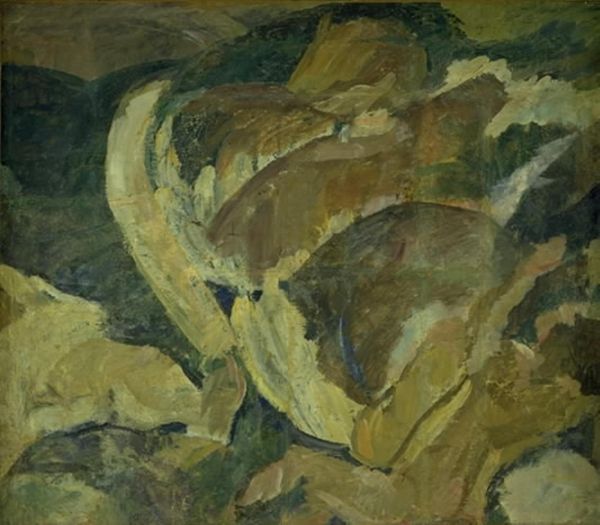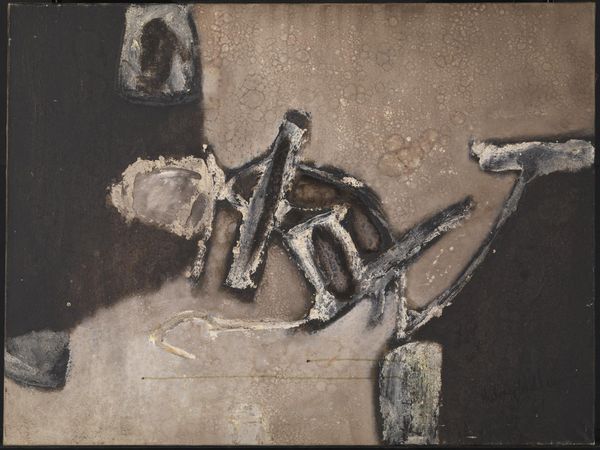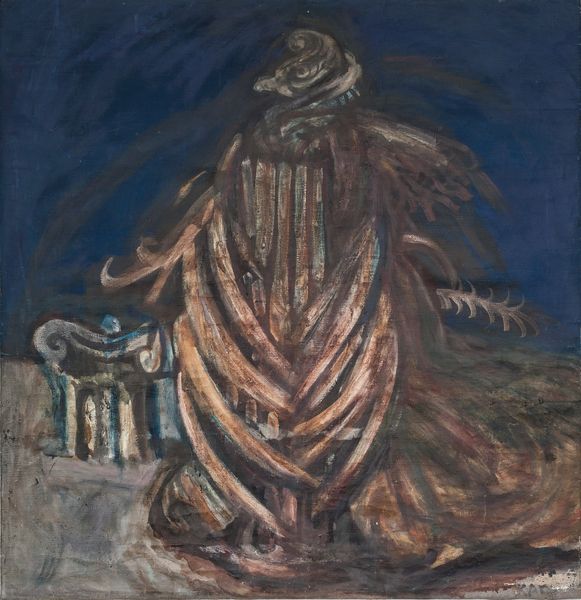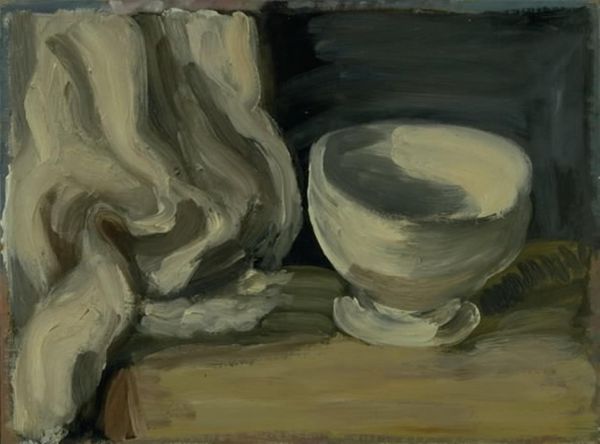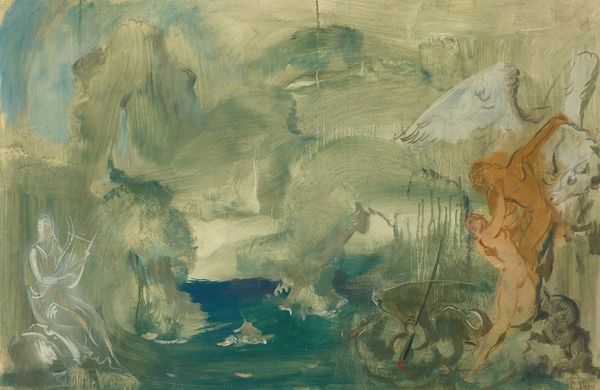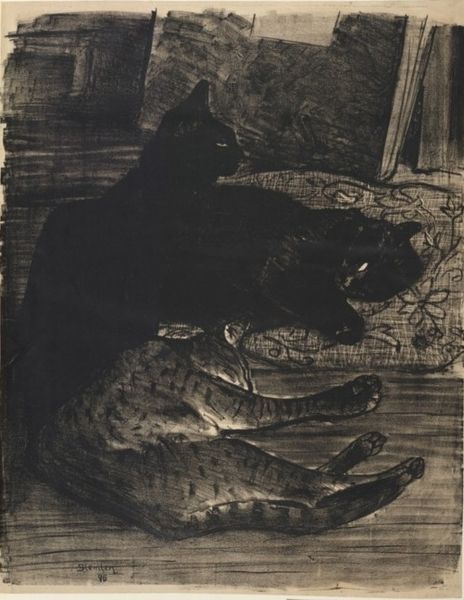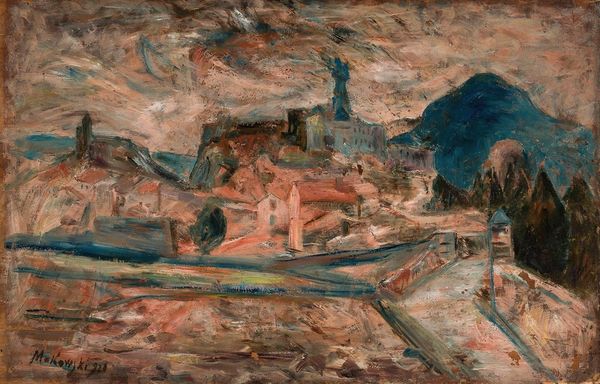
Dimensions: support: 515 x 770 mm frame: 590 x 845 x 80 mm
Copyright: © The estate of Peter Lanyon | CC-BY-NC-ND 4.0 DEED, Photo: Tate
Curator: Peter Lanyon's "Headland" presents an immediate sense of geological drama. The limited palette certainly evokes rugged terrain. Editor: I see more than geological drama; I sense the historical weight of colonialism on the Cornish landscape itself. Is Lanyon confronting the mining past? Curator: Perhaps, but look at the formal interplay—the dynamic composition, the tensions between the light upper register and the weighty forms below. He transforms observation into pure pictorial structure. Editor: Yes, and Lanyon's abstraction obscures that history—it's almost a refusal to acknowledge the socio-economic factors shaping this environment, favoring aesthetics over accountability. Curator: Though the artist has abstracted from the landscape, the forms create a visual and emotional experience that has enduring appeal. Editor: Agreed. Ultimately, this painting compels us to consider what it means to represent—and perhaps misrepresent—a place.
Comments
Join the conversation
Join millions of artists and users on Artera today and experience the ultimate creative platform.
tate 6 months ago
⋮
Lanyon was born in St Ives and returned to Cornwall after serving with the Royal Air Force during the Second World War. Headland – the dramatic convergence of cliffs and sea – reflects Lanyon’s early interest in the ambiguous spaces and edges in nature, the intersections of core and surface, land and water. Like Ivon Hitchens, with whom he corresponded during the 1950s and 1960s, Lanyon looked at landscape from multiple perspectives, recording his bodily experience of places from above, behind and below. Naum Gabo’s constructions were also important models for his working practice, which he referred to as ‘immersion in landscape.’ Gallery label, May 2007
